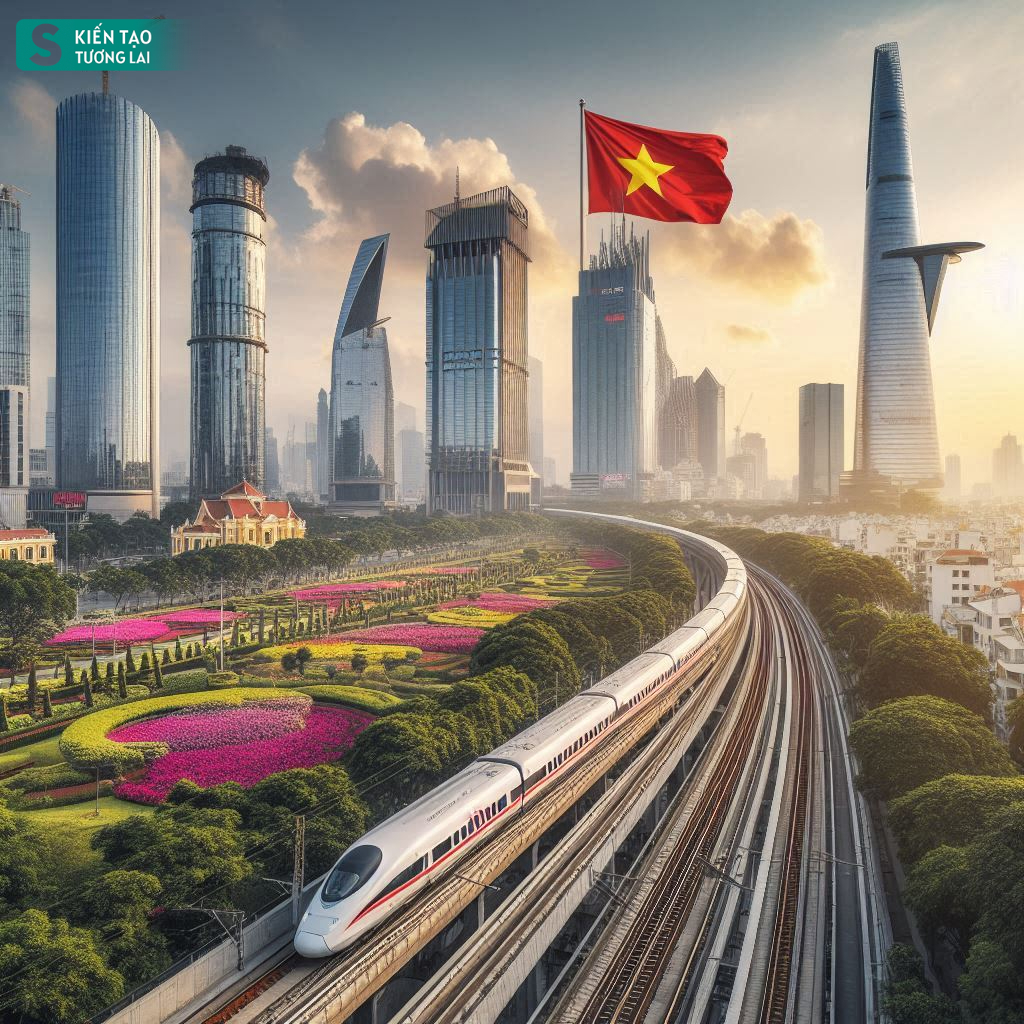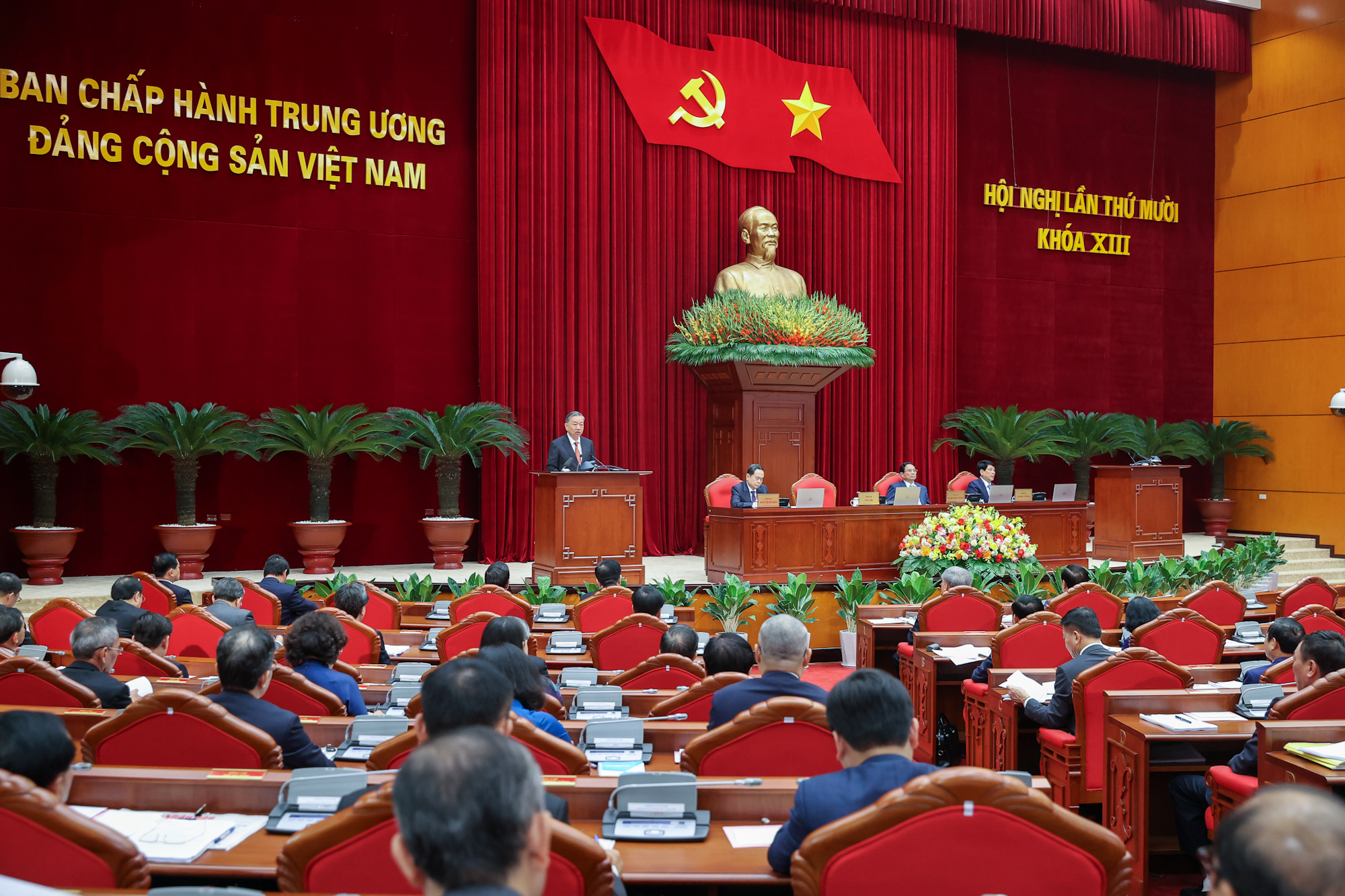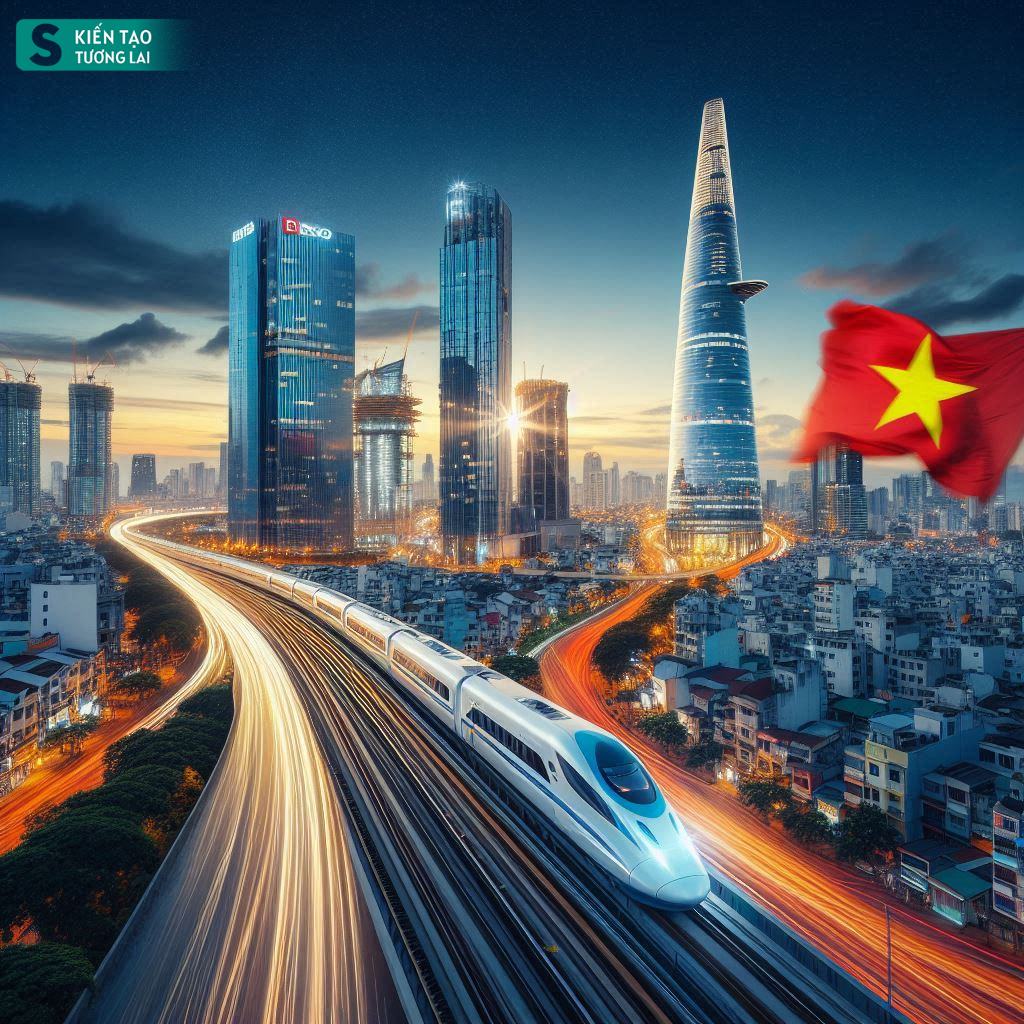Two Decades in the Making: The High-Speed Rail Project
On September 20, the Central Executive Committee of the Party unanimously agreed on the principle of investing in the 350km/h high-speed rail project on the North-South axis, to be presented to the 15th National Assembly’s 8th Session for consideration and decision.
“This is an extremely wise and timely decision, especially considering Vietnam’s current economic and social development conditions, scale, and situation,” emphasized Mr. Dang Sy Manh, Chairman of the Vietnam Railways Corporation.
Looking back, the high-speed rail project connecting the North and the South has been nearly two decades in the making. Specifically, since 2005, the Government has assigned the Vietnam Railways Corporation as the investor to study the North-South high-speed rail project. The study was conducted by the Vietnam-Japan Consulting Joint Venture (VJC Joint Venture).

The high-speed rail will pass through 20 provinces and cities – Illustration by AI Chat GPT
After years of research, in 2009, the pre-feasibility study report was approved by the State Appraisal Council and agreed upon by the Politburo in terms of investment policy. However, at the May 2010 session, the project was not approved by the National Assembly.
In the following years, the Ministry of Transport reviewed, updated, and completed the pre-feasibility study report. During this process, the Ministry organized conferences and workshops to gather opinions from agencies, experts, and scientists and held working sessions with 20 provinces and cities through which the project passes.
In February 2019, the Ministry of Transport submitted the pre-feasibility study report to the Prime Minister. Five months later, on July 11, 2019, the Prime Minister issued Decision No. 859 establishing the State Appraisal Council to appraise the pre-feasibility study report.

13th Central Committee, 10th Plenum – Photo: Government Portal
From 2019 to the present, the Government has made a series of new moves to promote the project, leading up to the important milestone at the 10th Plenum of the 13th Central Committee.
At the Plenum, the Central Executive Committee assigned the Party Committee of the Government and the Party Delegation of the National Assembly to direct relevant agencies to urgently complete the dossier for submission to the 15th National Assembly’s 8th session for consideration and decision. The Central Committee also requested that the dossier preparation be carried out meticulously, along with proposing specific mechanisms and policies for resource mobilization, investment procedures, technology application, and mastery for the National Assembly deputies to discuss at the upcoming session.
“To have a railway line that meets the requirements set by the Central Committee, I believe that the National Assembly will have discussions and exchanges to come up with the best plan to successfully implement the Resolution of the Central Committee,” said Mr. Bui Van Cuong, General Secretary of the National Assembly, Head of the National Assembly Office.
If approved by the National Assembly at the upcoming session, it will provide a solid legal basis for the early commencement of the high-speed rail project, realizing the dream of traveling on high-speed trains for tens of millions of people.
The High-Speed Rail Project Is More Crucial Than Ever
According to calculations by the Ministry of Transport and related units, the high-speed rail can contribute about 1% to GDP growth annually. In addition, the project will enhance regional connectivity, growth poles, create a spillover effect, and open up new economic development space.
“The high-speed rail project has been under the direction of the Government and studied by the Ministry of Transport since 2005, and its urgency has never been greater than it is now. The investment in this project has been carefully and thoroughly considered, and it is a realization of the Party’s directives and the National Master Plan,” said Mr. Nguyen Danh Huy, Deputy Minister of Transport.

The dream of traveling on the 350km/h high-speed rail is getting closer – Illustration by AI Chat GPT
Earlier this year, Minister of Transport Nguyen Van Thang shared the ministry’s goals for 2024 on Vietnam Television, emphasizing that the North-South high-speed rail project is of strategic importance to the nation and the people. It will create a breakthrough to promote socio-economic development and contribute to enhancing the country’s competitiveness.
The head of the Ministry of Transport also affirmed that this project has complex technical and technological standards, requires a significant amount of capital, and is the first of its kind to be implemented in Vietnam. Therefore, it needs to be carefully and thoroughly studied, keeping up with the world’s development trends while also suiting Vietnam’s specific conditions.
Regarding the investment capacity for this mega-project, in June, Mr. Thang affirmed that Vietnam now has the necessary conditions to invest in high-speed rail. The Minister of Transport cited that GDP is now four times higher than in 2010, financial potential has increased many times over, and public debt is only about 37%…
“Whether we borrow ODA or not, Vietnam still needs to implement this project and ensure two important conditions: technology transfer and speedy implementation, striving for completion within five years,” emphasized Mr. Thang, as quoted by the Ho Chi Minh City Law newspaper.
As planned, the high-speed rail project will pass through 20 provinces and cities from Hanoi to Ho Chi Minh City, with speeds of up to 350km/h. At this speed, passengers can travel from Hanoi to Ho Chi Minh City in just over five hours.
The North-South high-speed rail project has a total length of 1,541km and an estimated investment of 65-70 billion USD. It will feature double tracks with a standard gauge of 1,435mm, electrification, and infrastructure designed for a maximum speed of 350km/h.
The line will start from Ngoc Hoi Station in Hanoi, passing through 20 provinces and cities, and ending at Thu Thiem Station in Ho Chi Minh City. There will be 23 passenger stations along the route, with an average distance of 67km between stations, and 5 freight stations located in major trading areas.
The Ministry of Transport proposes prioritizing resources to start the Hanoi-Vinh and Ho Chi Minh City-Nha Trang sections, with a total length of about 642km, by the end of 2027. The Vinh-Nha Trang section, about 899km long, is expected to be started before 2030.
The high-speed rail is expected to be completed and operational by 2035.
“The Province’s Ambitious Plans: International Airport, World-Class City, and $37 Billion Investment. What are the Four Key Tasks Outlined by the Prime Minister?”
By 2050, this province aspires to become a centrally-governed city, a pioneer in high-tech industrial development with a synchronous, smart, and modern infrastructure system.
Vietnam’s Largest Airport Aims for Substantial Completion by Late 2025, With Potential Metro Access?
This is the largest airport project our country has ever seen. An ambitious, groundbreaking development that will transform travel and connectivity for generations to come. With a vision to create a transport hub like no other, this project promises to be a gateway to the world, offering unparalleled convenience and efficiency. A true milestone in our nation’s history, it will leave a lasting legacy and set a new benchmark for airport design and functionality.
“Securing Fuel Supply: The Prime Minister’s Directive for Uninterrupted Access”
The Prime Minister directs the Ministry of Industry and Trade to instruct gasoline and oil traders to secure their supply chains and ensure an uninterrupted flow of fuel to their distribution networks. The directive emphasizes the importance of proactive planning, urging traders to prepare for the upcoming year and beyond by developing comprehensive fuel plans for 2025 and subsequent years.
The Chairman of the 100,000-Employee Corporation Aims to Build a “Mega Port”: Prime Minister Confirms Vietnam’s Significant Advantage
The renowned Danish corporation is regarded as a leading global enterprise, with a formidable 120-year history. A powerhouse in its industry, the company’s longevity is a testament to its unwavering commitment to innovation and excellence. With a rich heritage that spans over a century, this organization has firmly established itself as a pioneer and a force to be reckoned with.













































